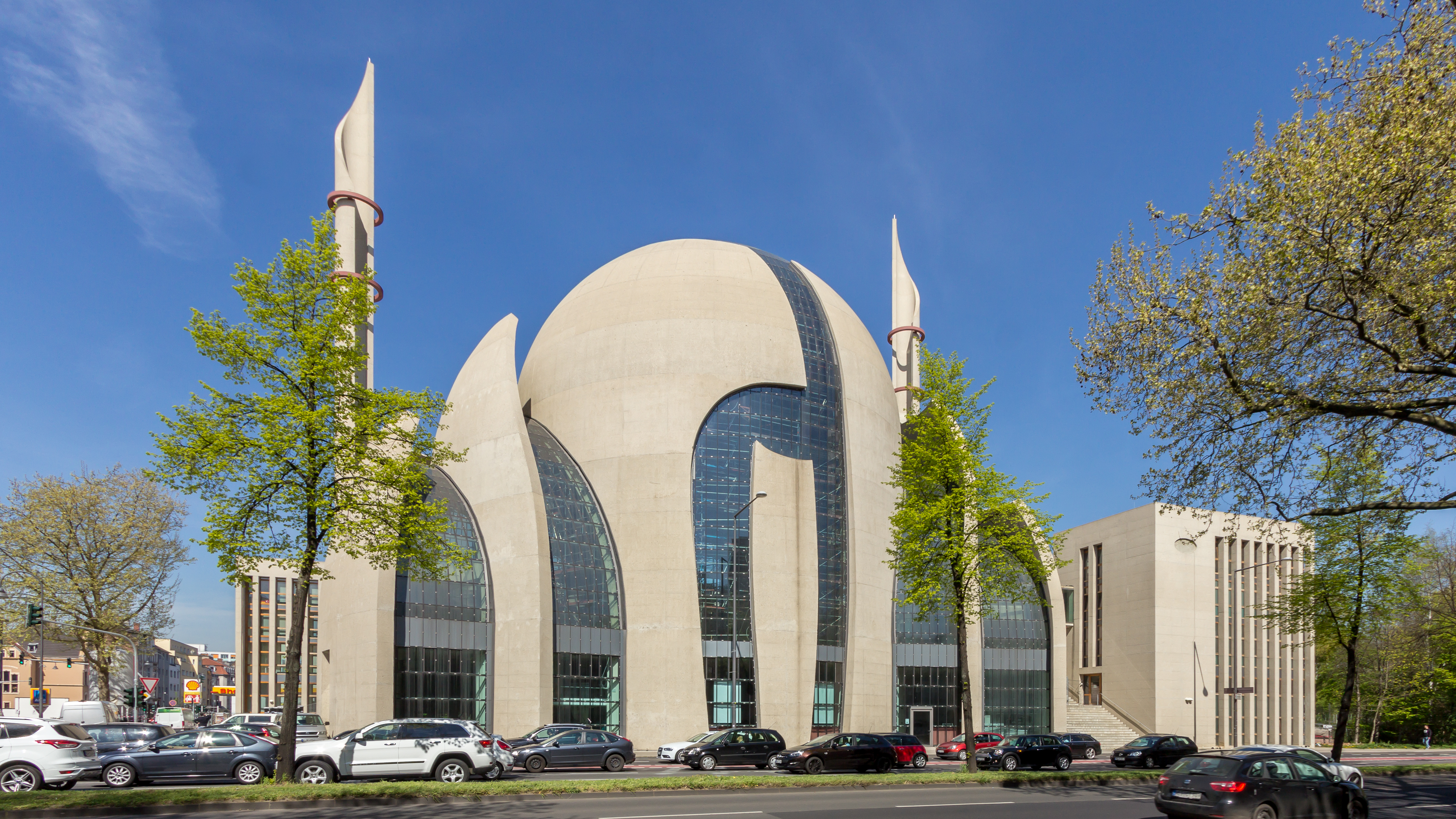In a recent study, renowned US think tank Pew has chosen to address a highly sensitive political issue: the number of Muslims living in European countries. The study, which was published on November 29, 2017, promises to “provide[…] the first estimates of the growing size of the Muslim population in Europe following the wave of refugees between 2014 and mid-2016”. The text can be downloaded » here.
Three scenarios
Starting from an estimate of current numbers of Muslims living in the EU, Norway, and Switzerland – a figure which Pew puts at close to 26 million, or 4.9 per cent of the population – the study models three scenarios, varying in terms of future immigration levels.
Under the ‘zero migration’ projection in which Muslim immigration ceases completely, Europe will still see an increase of its Muslim population to 7.4 per cent of all Europeans by 2050. This is linked to European Muslims’ younger average age and higher fertility levels.
In the case of the ‘medium migration’ model, there are no further refugee flows comparable to the levels of 2014-2016; yet ‘regular’ migration (for the purposes of work, education, and family reunification) persists. In this scenario, Muslims are expected to make up 11.2 per cent of the European population by the middle of the century.
Finally, in the ‘high migration’ scenario, Europe will continue to witness record numbers of refugees arriving. This would lead to a near-tripling of the Muslim population by 2050, as 14 per cent of the continent’s inhabitants would then be Muslim.
Difficulty of assessing Muslim migration
The authors recognise that migration levels are “unpredictable” and depend not only on patterns of conflict in Europe’s neighbourhood but also on political and economic conditions within Europe. Therefore they avert that their conclusions should not be read as predictions but as projections.
In the same vein, the study points out that half of the migrants who arrived in Europe over the past three years were not Muslim. Not only is the linkage established in much of popular parlance between ‘migration’ and ‘Muslims’ therefore somewhat reductionist. The composition of migration into Europe might also change in the coming decades – a fact that the study does not take into account.
Differences between European countries
The study also zooms in on individual European countries – particularly on those who have recently received a large number of Muslim immigrants, such as Germany. Germany’s Muslim community, currently at 6 per cent of the population, is expected to grow to 8.7 per cent under the ‘zero migration’ scenario. In the case of ‘medium’ levels of immigration that share would reach 10.8 per cent, compared to 19.7 per cent in the event of an unabatedly ‘high’ migratory dynamic.
By contrast, the trajectory of Muslim populations in France, Italy, and Belgium appears less dependent on migration: They are expected to see a strong growth of their Muslim populations under the ‘zero migration’ scenario as Muslim citizens and residents already living in these countries are relatively young and, on average, have a larger number of children.
The study thus seeks to provide some hard numbers to European debates about immigration, integration, and identity. This is a welcome attempt, given the fact that Europeans tend to grossly overestimate the number of Muslims living in their midst.1
Shaky empirical bases
At the same time, any attempt at counting the continent’s Muslim inhabitants must suffer from a number of empirical weaknesses and methodological drawbacks. Uncertainty already affects the baseline estimate of Europe’s current Muslim population from which the study starts. The authors concede that “coming up with an exact count of Muslims currently in Europe […] is not a simple task”.
The example of Germany elucidates this difficulty perfectly: official German estimates of the country’s Muslim population are based on extrapolating from immigrants’ country of origin.
Yet not all Muslims are immigrants or their descendants (since there is an unknown number of autochthonous converts) and not all immigrants from Muslim-majority countries are Muslim – the recent migrations from religiously diverse countries in the Middle East such as Syria are a case in point. (It might not even be unreasonable to assume that non-Muslim minorities have left the battlefields of the Levant at a faster rate than their Muslim compatriots.)
Unpredictable fertility rates
And while the study is correct to point out that the patterns of migration that will partly determine the size of European Muslim communities are impossible to predict, we might to some extent say the same about the second major variable upon which the future share of Muslims among Europe’s population hinges – fertility rates.
Sticking with the case of Germany is worthwhile in this context, given the fact that the country has long served as the paradigmatic example of low ‘indigenous’ birthrates and a supposed demographic Islamisation. Yet already prior to the arrival of Middle Eastern refugees, the country had in fact seen its fertility rate grow for years, reaching a 33-year high in 2015.2
Conversely, as immigrants and their descendants stay on in Germany, their fertility rates tend to decline and approach the German mean.3 In the face of these dynamics, any predictions about future fertility rates of Muslims and non-Muslims in Europe seem a hazardous task.
The fetishisation of numbers
Finally, any abstract estimate of the number of Muslims living in Europe tells us comparatively little of what this actually means in practice. As the study’s authors note,
levels of religious commitment and belief vary among Europe’s Muslim populations. Some of the Muslims enumerated in this report would not describe Muslim identity as salient in their daily lives. For others, Muslim identity profoundly shapes their daily lives.
If it is not clear what ‘being Muslim’ means to Europeans who adhere to the Islamic faith today, it is even harder to guess what it will mean by 2050. While the supposition that Muslim immigrants and their offspring will simply let go of their Muslim faith and identity as time goes by is evidently too simplistic. Yet there are signs for disenchantment with established patterns of Islamic orthodoxy and orthopraxy among European Muslims.
Political repercussions
In the body of their study, the authors at the Pew Research Center acknowledge some – though not all – of these empirical blind spots. Yet the overall message sent is still one about Europe’s growing Muslim population, together with the irredeemable promise that the study has the hard numbers to make this growth quantifiable.
Riem Spielhaus, Professor of Islamic Studies at Göttingen University, accused the Pew study of feeding into a “demographic panic” without making a meaningful, factually sound contribution.4
That the number of Muslims living in Europe will increase in the coming decades seems a relatively straightforward guess. The extent to which the Pew study adds to our knowledge and understanding of this phenomenon is, however, questionable. As numerous newspaper headlines attest, its attractiveness has rested chiefly in the fact it has enabled some pundits to predict the unchecked multiplication of Europe’s Muslim population on the basis of scant evidence.5
Sources
https://www.theguardian.com/society/datablog/2016/dec/13/europeans-massively-overestimate-muslim-population-poll-shows ↩
http://www.tagesspiegel.de/politik/geburtenrate-in-deutschland-frauen-bekommen-mehr-kinder/14700712.html ↩
http://www.spiegel.de/gesundheit/schwangerschaft/geburten-in-deutschland-statistisches-bundesamt-jede-fuenfte-frau-bleibt-kinderlos-a-1159787.html ↩
https://www.zdf.de/nachrichten/heute/muslime-in-deutschland-106.html ↩
https://www.welt.de/politik/deutschland/article171103437/In-einem-Szenario-verdoppelt-sich-die-Zahl-der-Muslime-bis-2050.html ↩






